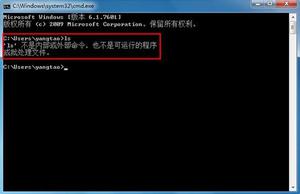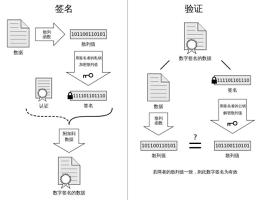Python3学习笔记27-ConfigParser模块

ConfigParser模块在Python3修改为configparser,这个模块定义了一个ConfigeParser类,该类的作用是让配置文件生效。配置文件的格式和window的ini文件相同,大致如下:
【section】
name = value
name:value
用 = 或 : 来赋值
section可以理解为一个模块,比如登录的时候,这个section可以叫login,下面放着username和password
该模块主要使用模块中RawConfigParser(),ConfigParser()、SafeConfigParse()这三个方法(三选一),创建一个对象使用对象的方法对配置文件进行增删改查操作
主要介绍ConfigParser()下的方法
涉及增删改的操作 都需要使用write()方法之后才会生效
add_section():用来新增section
set():用来新增对应section下的某个键值对
import configparserconfig = configparser.ConfigParser()
file = 'D:/PycharmProjects/Vuiki/Config/config.ini'
config.read(file)
config.add_section('login')
config.set('login','username','1111')
config.set('login','password','2222')
with open(file,'w') as configfile:
config.write(configfile)
read()方法是用来读取配置文件的,如果不加上read()方法,写入是直接从头开始写的,使用了read()之后,是从读取完后的光标开始写入,类似追加模式'a'一样。可能有疑惑,既然有追加模式,直接把with里面的'w'换成'a'就可以,干嘛还要读一次
将上面的代码修改一下,将username和password的值修改一下
import configparserconfig = configparser.ConfigParser()
file = 'D:/PycharmProjects/Vuiki/Config/config.ini'
config.read(file)
config.set('login','username','2222')
config.set('login','password','3333')
with open(file,'w') as configfile:
config.write(configfile)
会发现username和password的值被修改了,如果使用'a'模式,会发现报错,没有找到login这个section。
就算把上面代码中加上config.add_section('login')也只会在后面进行追加新增,而不会做修改操作
所以考虑到把方法封装的缘故,使用read()和'w'写入模式,来实现追加新增,修改配置文件
读取
使用get()方法可以获得指定section下某个键的值
import configparserconfig = configparser.ConfigParser()
file = 'D:/PycharmProjects/Vuiki/Config/config.ini'
config.read(file)
username = config.get('login','username')
password = config.get('login','password')
print(username,password)
sections()方法返回可用的section,默认DEFAULT是不会返回的
import configparserconfig = configparser.ConfigParser()
file = 'D:/PycharmProjects/Vuiki/Config/config.ini'
config.read(file)
username = config.sections()
print(username)
看效果需要自己新增一个section,Vuiki是我工作中配置文件本来就有的- -
options()返回对应section下可用的键
import configparserconfig = configparser.ConfigParser()
file = 'D:/PycharmProjects/Vuiki/Config/config.ini'
config.read(file)
username = config.options('login')
print(username)
has_section()方法判断section是否存在,存在返回True,不存在返回False
import configparserconfig = configparser.ConfigParser()
file = 'D:/PycharmProjects/Vuiki/Config/config.ini'
config.read(file)
test1 = config.has_section('login')
test2 = config.has_section('test')
print(test1)
print(test2)
has_option()方法判断section下,某个键是否存在,存在返回True,不存在返回False
import configparserconfig = configparser.ConfigParser()
file = 'D:/PycharmProjects/Vuiki/Config/config.ini'
config.read(file)
test1 = config.has_option('login','username')
test2 = config.has_option('login','pass')
print(test1)
print(test2)
还有一些不罗列了,感兴趣可以去查一下
删除
remove_section()方法删除某个section
remove_option()方法删除某个section下的键
import configparserconfig = configparser.ConfigParser()
file = 'D:/PycharmProjects/Vuiki/Config/config.ini'
config.read(file)
config.remove_option('login','username')
config.remove_option('login','password')
config.remove_section('login')
with open(file,'w') as configfile:
config.write(configfile)
一定要先read()到内存,不然删除报错
以上是 Python3学习笔记27-ConfigParser模块 的全部内容, 来源链接: utcz.com/z/386809.html









